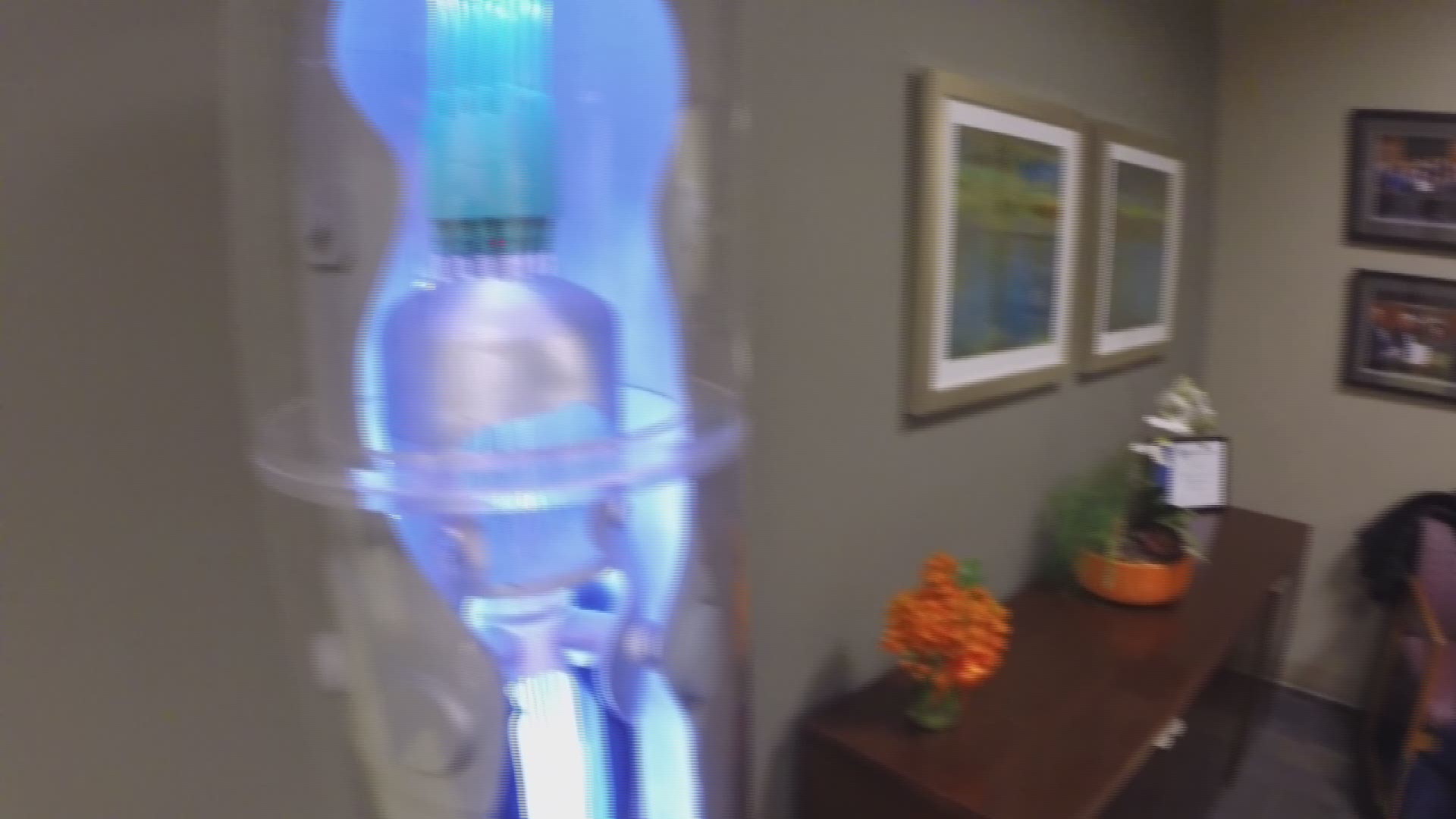PORTLAND, Ore. -- An Oregon company is developing a technology that could change the world and bring billions of dollars to the United States, and the state of Oregon.
In a rural part of Corvallis, a roughly 25-foot structure sits just off the road. Drive by and you might not know what it is. But it's a mock nuclear reactor. It is the upper third of just one module. One module, could power a city about the size of Corvallis, where the technology is being designed.
At NuScale Power, Co-Founder and Chief Technology Officer, Dr. Jose Reyes has found a new way to make nuclear energy.
“The actual size is about 72 feet. The diameter is about 15 feet. So that gives you a sense of scale,” said Reyes as he motioned toward a scaled-down version of the company's small modular reactor. They’re also called SMRs and are basically a smaller version of a nuclear reactor.
“What we're trying to do is commercialize a 50 megawatt electric reactor,” said Reyes. “You can stack up to 12 of these in a single plant to produce 600 megawatts of electricity.”
600 megawatts of electricity is enough to power a city close to the size of Portland.
“It has big impacts not just because it’s clean power. It can also provide clean water. We can provide hydrogen for hydrogen fuel cars and electricity for electric fuel cars. One module will produce enough power for 100,000 electric vehicles,” Reyes said.
When it comes to clean water, he said the SMR can produce a lot of it in a short period of time.
“One of our modules can produce 50-million gallons of clean water per day. So if you think about a 12-module plant, we could fill from the basketball court at the Moda Center from the floor all the way up to the sky boxes in about a day with clean water, and we can do that every single day,” said Reyes.
Reyes worked on the idea while he was a nuclear engineering professor at Oregon State University in 2000. Then after some traveling in Vienna as he worked with the International Atomic Energy Agency, he saw the need for clean energy in parts of the world that couldn't sustain the cost and size of a conventional nuclear power plant. In 2007 he co-founded the company.
“[SMRs] can be built in a factory so that makes it less expensive and you can have very high quality control in a factory. It can be shipped by rail, barge or truck to a site and then installed,” said Reyes.
In addition, Reyes said SMRs are safer than conventional reactors.
“It’s a very small amount of fuel per module. What we found is we can safely shut down this plant without any operator or computer action and keep it cool for an indefinite period of time without any AC power or DC power, or the need to add additional water.”
NuScale Power recently received a $40-million grant from the federal government and it's expecting an additional $40 million from industry investors.
While there's no plan to build a plant in Oregon yet, companies in the state could still benefit. He said if his company is able to get the first SMRs to market, there’s a $550 billion global market waiting to take advantage of the technology.
“When you think about a project as large as a nuclear power plant, there’s so many suppliers that have to provide valves and pumps and different pieces of equipment. It's an opportunity for an Oregon supply chain to be part of something global,” said Reyes.
NuScale Power is the only company in the U.S. being reviewed by the Nuclear Regulatory Commission, Reyes said. It's already passed phase one of the process, which is the most rigorous.
Now the goal is to beat out countries like China and Russia to commercialize the reactor.
“Suddenly the whole world has discovered SMRs and everyone’s racing to the market to provide that technology and right now we’re the best hope for the United States to get that technology out there and to be competitive,” said Reyes.
Reyes said he hopes all the designs will be complete and approved by 2020 with a facility at the Idaho National Laboratory up and running by 2026.
What happens to the spent fuel from the reactors?
Company spokeswoman Mariam Nabizad sent the following statement:
- It’s important to keep in mind that used nuclear fuel still has considerable energy available, and could be recovered.
- There are existing and new technologies on the drawing boards today that can utilize this fuel.
- We have demonstrated that used fuel can be safely transported and stored, as needed. (She doesn't say where.)
- The NuScale design will also be able to take advantage of advanced fuel designs in development, when they are ready, which hold real promise to reduce the inventory of used fuel.

